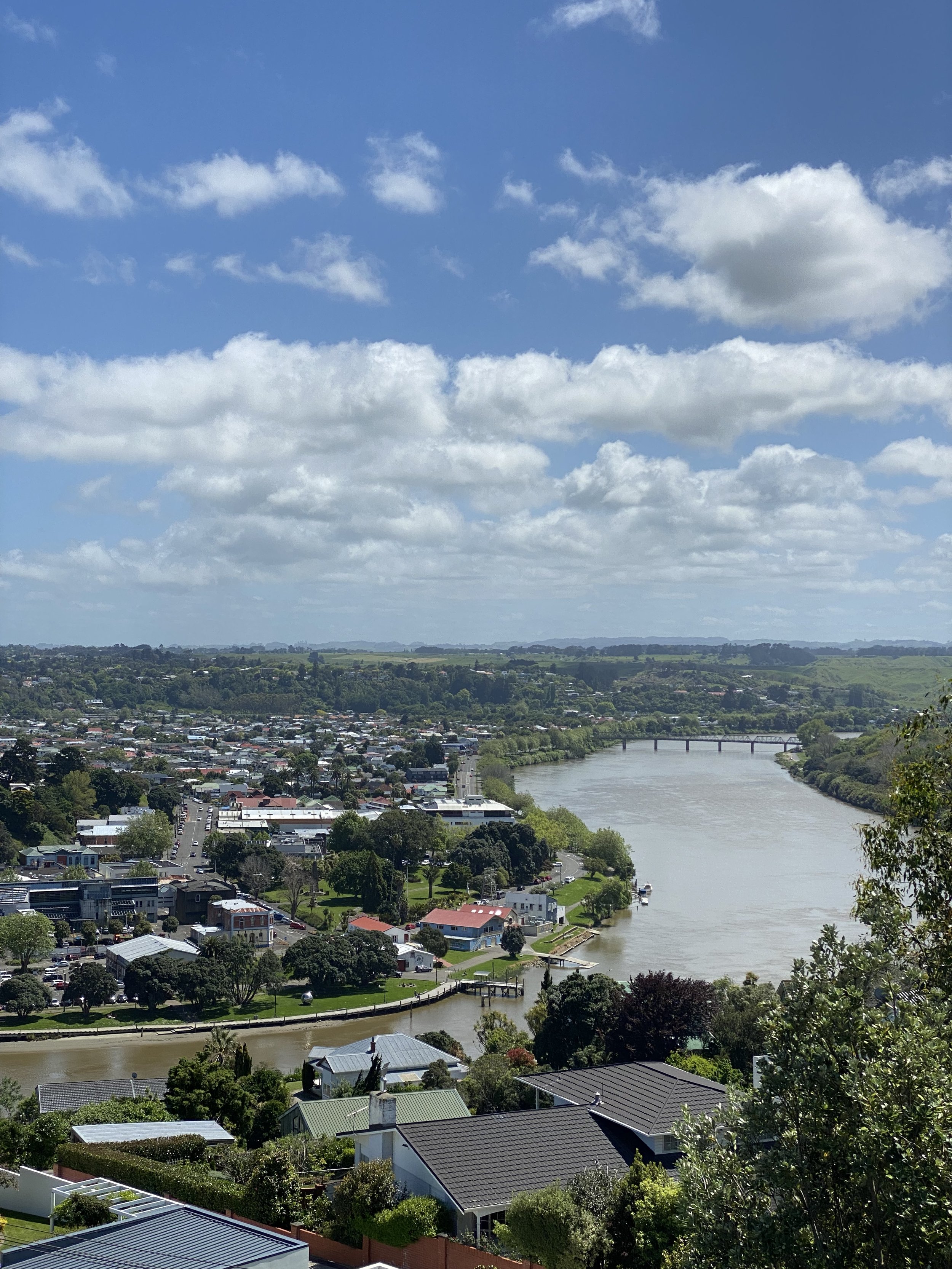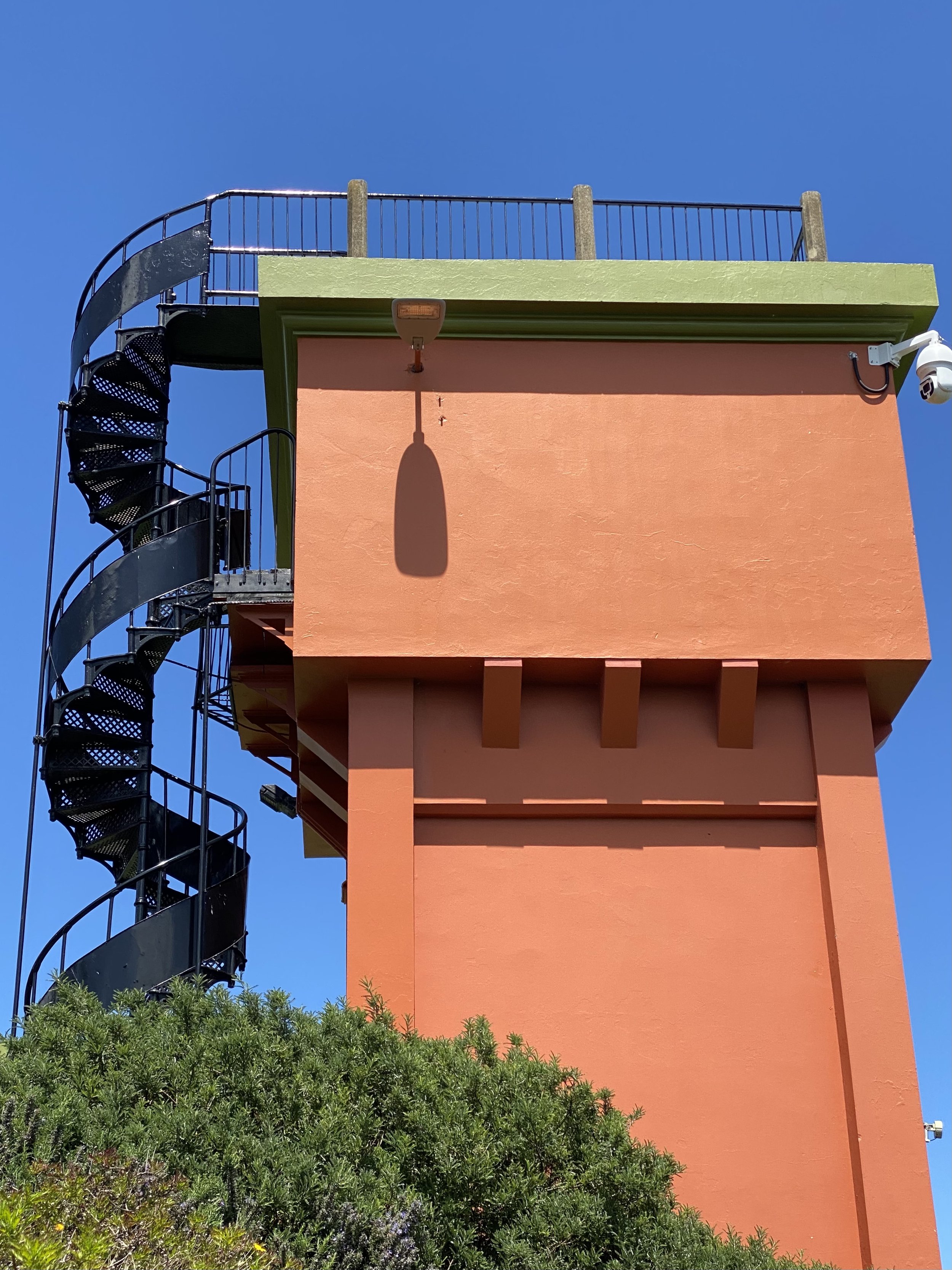Why a century-old underground elevator has won the hearts of tourists and locals in Whanganui
In October, the Durie Hill Elevator will star in Whanganui Heritage Month, an annual event promoting the district. Learn more
Indie musician and public transport advocate, Anthonie Tonnon, who operates the Durie Hill Elevator in Whanganui (image by Jacqui Gibson).
New Zealand’s only underground elevator — once a symbol of Whanganui’s golden age of public transport — is offering hope a similar era will rise again.
And indie musician and public transport advocate Anthonie Tonnon is one of Whanganui’s most hopeful residents.
The Dunedin-raised musician moved from Auckland to Whanganui five years ago with fashion stylist Karlya Smith.
In 2016 the couple married in Whanganui on a whim, unexpectedly falling in love with the river city and later relocating to the Whanganui suburb of Gonville.
Today, the pair (and three others) balance their day jobs with operating the Durie Hill Elevator, a Category 1-listed public lift built in 1919, on contract to the Whanganui District Council.
“I love the fact the elevator was built by planners and developers committed to making towns liveable for as many people as possible,” says Anthonie, as he walks the 213-metre tunnel to the lift’s subterranean entrance.
According to council records, architect Samuel Hurst Seager saw the lift as a vital accessway to and from New Zealand’s first modern garden suburb on Durie Hill. At the time, cars weren’t commonplace and a steep staircase of 191 stairs and a long, winding road were the only ways up.
Signage on Durie Hill, Whanganui (image by Jacqui Gibson).
I’ve come to Whanganui from Wellington on a Tuesday afternoon to interview Anthonie and experience the 102-year-old elevator firsthand.
The elevator was “once an integral part of the city’s multi-modal transport network”, also featuring tram and bus services, Anthonie explains, before pressing a button to call the wooden elevator down to meet us and begin his shift.
Yet, unlike the city’s trams and buses, the elevator somehow survived decades of major economic and social change.
“It escaped the removal of trams, because it didn’t take up space coveted by cars. It even survived the local government reorganisation of the late ’80s, which prevented cities from running or directly subsidising buses,” says Anthonie.
As such, it’s one of the most frequent, enduring and convenient examples of public transport around today, he says.
According to council figures, more than 35,000 people use the elevator to move between Durie Hill and the city every year. Data shows users are roughly 60 percent tourists and 40 percent locals. Adults pay $2 each way. Kids travel half price. Pets and bikes are free.
As we take the 55-second journey up to the lift’s hilltop exit on Durie Hill, Anthonie says continued use of the elevator bodes well for the city’s renewed enthusiasm for public transport.
In November Whanganui regional councillor Nicola Patrick led a nationwide call for increased government investment in bus services. The move followed the declaration of a climate emergency by the district council in 2020, which also emphasised the need to boost public transport in Whanganui.
Whanganui District Council Heritage Advisor Scott Flutey says the popularity of the Durie Hill Elevator, in part, reflects the special place it occupies in the hearts of Whanganui residents and the tourists who visit it.
In 2021 the Whanganui Regional Heritage Trust raised more than $240,000 to replace and modernise the elevator’s riverside entrance on Anzac Parade. Every month, the council runs monthly checks of the elevator, as well as a full-day inspection once a year. More recently, the council sent the lift shaft to Auckland to complete a months-long programme of significant repair and maintenance work.
This summer, the elevator was a key stop-off on local heritage tours. It often features in media stories and public talks about Whanganui. In October it will star in Whanganui Heritage Month, an annual event promoting the district.
Laura Kellaway, Conservation Architect at Heritage New Zealand Pouhere Taonga, says the elevator acts as both a portal to the past and a window into the future.
“Look around – we’re still seeking liveable human-scale places where you can walk to work and town from home. What could be more special than making that journey in a beautiful wooden-panelled elevator that’s one of only two in the world and where you travel, seemingly through space, through the centre of a hill?”
Says Scott: “For many people in Whanganui, our heritage is a tangible, living thing. It’s something a lot of us feel connected to.”
Durie Hill, for example, was once a strategic pā site in a network of early pā sites of significance to Whanganui iwi. Following European colonisation of the district, and after World War I, it became one of New Zealand’s first modern suburbs and the site of the Durie Hill Elevator and Category 2-listed Durie Hill War Memorial Tower, which is still standing today.
In the 1950s, a polio hospital was erected on Durie Hill and has since been demolished. In 1976, a wooden entranceway by noted Whanganui carver Austin Brasell called ‘Poutama Nui Awa’ was installed at the base of the hill and is now heritage protected.
“With such rich cultural heritage at sites like Durie Hill comes the opportunity to share the range of stories often hidden within our communities,” says Scott, who launched the council’s 10-year heritage strategy in December.
And, while the story of the Durie Hill Elevator is pretty well told, says Scott, there’s always the chance to connect it to other elements of Whanganui’s heritage and to add more context and interest, he says.
Helen Craig, Whanganui District Councillor and Chair of the council’s Property and Community Services Committee, couldn’t agree more. Last year, the council contracted Anthonie’s firm, Whanganui Connection, to run the elevator for 12 months, with the right of renewal. Prior to that, the Mabbot family ran the elevator for several generations and did a great job, she says.
“But we’re delighted Anthonie – a performer and trained historian with an obvious passion for heritage – is championing the site,” she tells me via Zoom.
“He knows a lot about Whanganui history and his passion for public transport is obvious. He and his team are experimenting with different ways of telling the site’s story, which is generating a great buzz.”
Today, the Durie Hill Elevator even has its own Instagram page, she says.
Standing on the elevator tower lookout, taking in the scene of the river and township below, Anthonie is quick to point out key sites of interest. Gesturing towards the Whanganui Regional Museum, he points out the War Memorial Centre just below it, before the conversation turns to the site of Whanganui’s now demolished railway station and the main route of the township’s long-defunct tram network.
“When it comes to communicating the story of the Durie Hill Elevator,” he says, “I’m not so interested in nostalgia or creating a fun ride. I’m more interested in emphasising the different aspects of the commute: the fact the elevator rattles and clunks, for example; the fact the commute gives you time to reflect or bump into someone you haven’t seen for a while and have that incidental conversation.
“I’m also interested in connecting the elevator to those periods in our history when we got from A to B using an incredible bus, rail or tram network.”
Public transport is an enduring theme tackled in much of Anthonie’s work. It’s a hallmark of his songwriting. In 2018 his Rail Land Tour saw each live music performance bookended by a rail journey.
“I like to think the era of the liveable provincial town will come again. More and more of us are moving away from big cities. But why forgo the practical pleasures that go with urban life? We just have to be reminded of those times in New Zealand’s past when living well in smaller centres was possible; when – in fact – really great infrastructure meant it was the norm.”.
This story was first published in Heritage New Zealand magazine.
Durie Hill Elevator tunnel, Whanganui (image by Jacqui Gibson).







